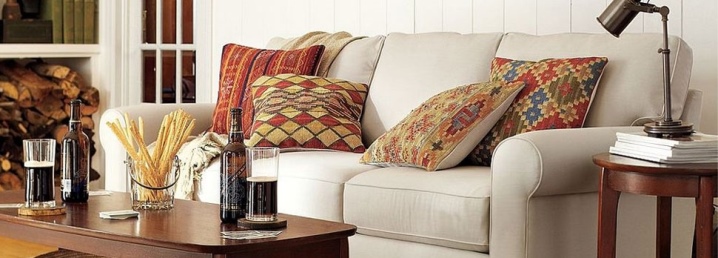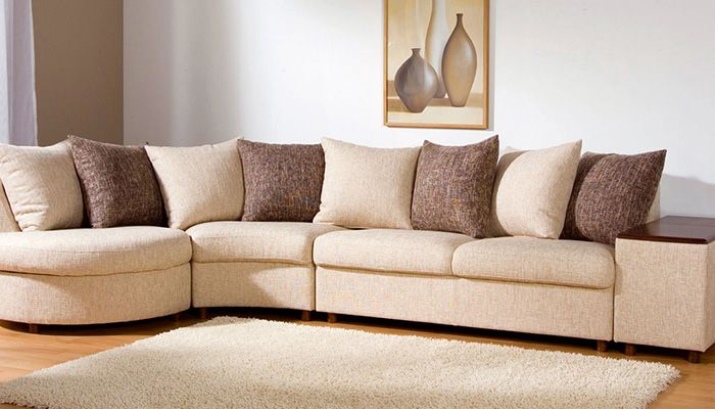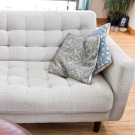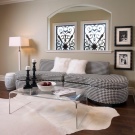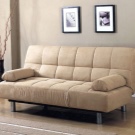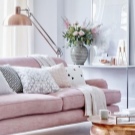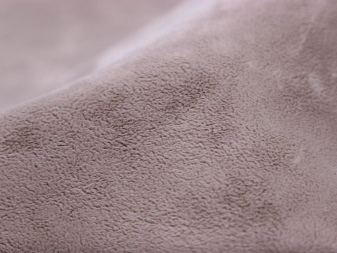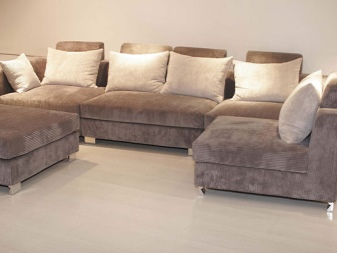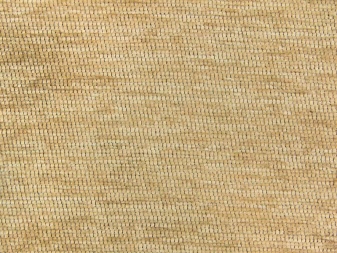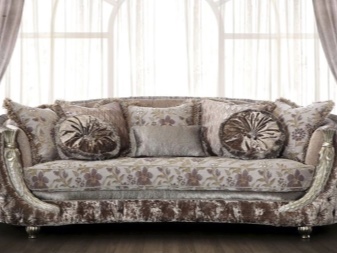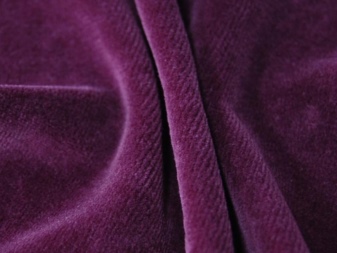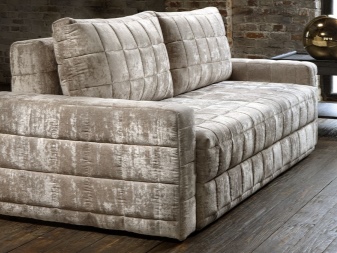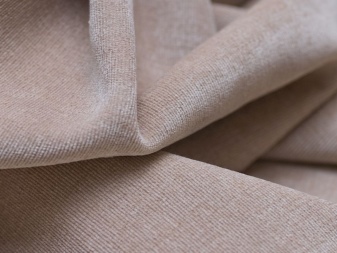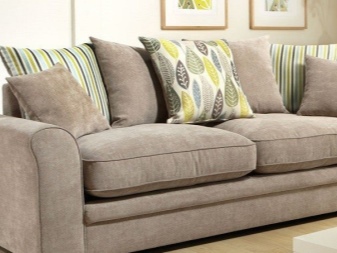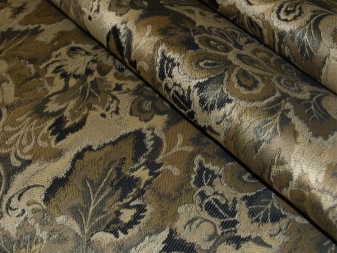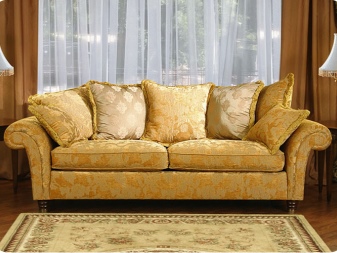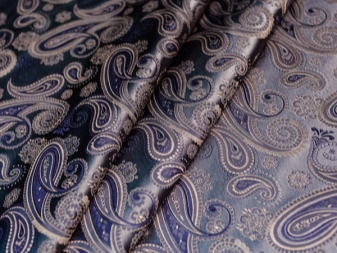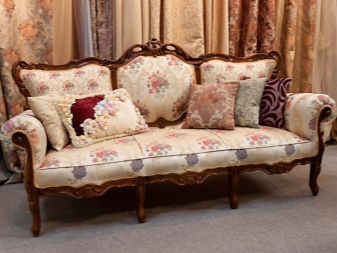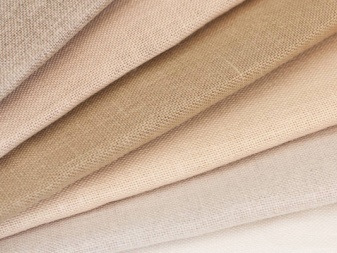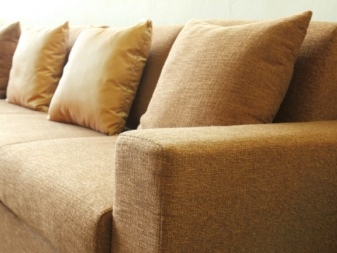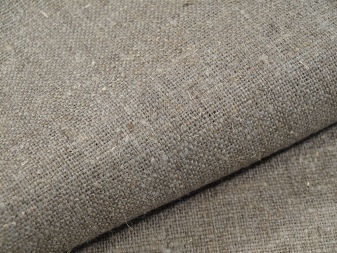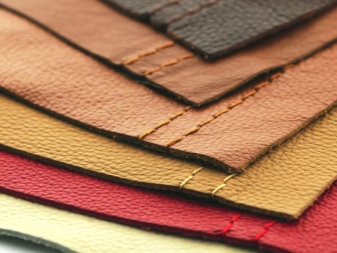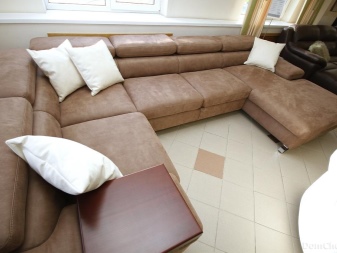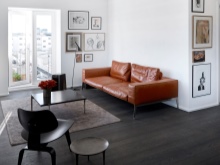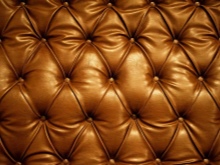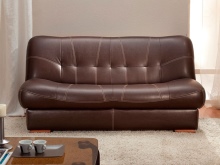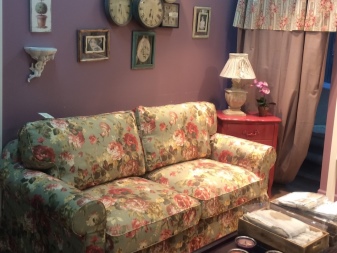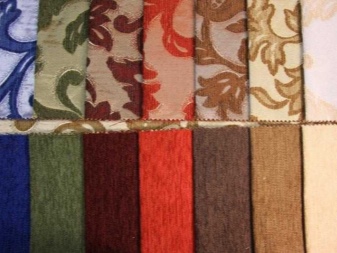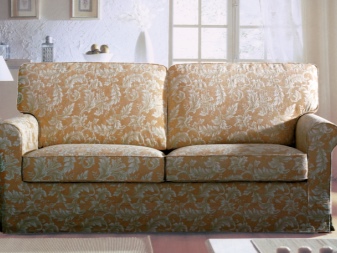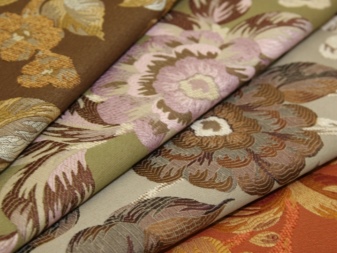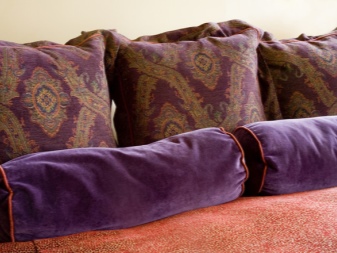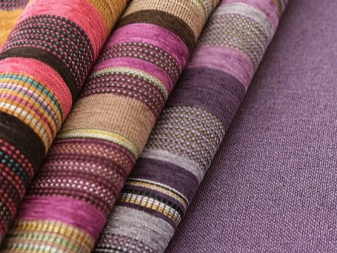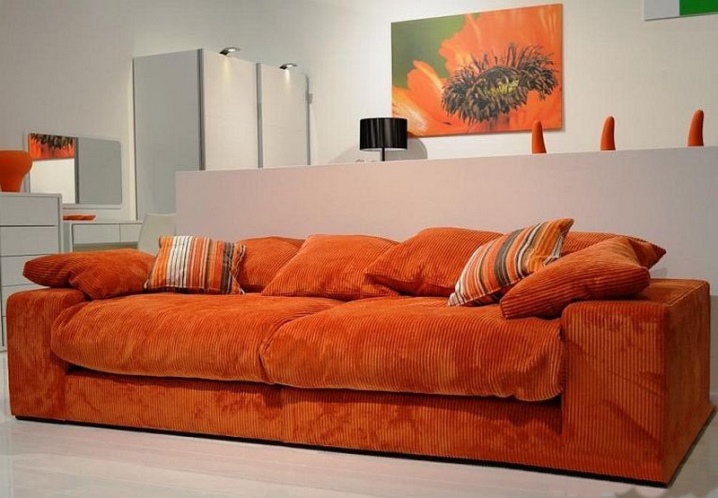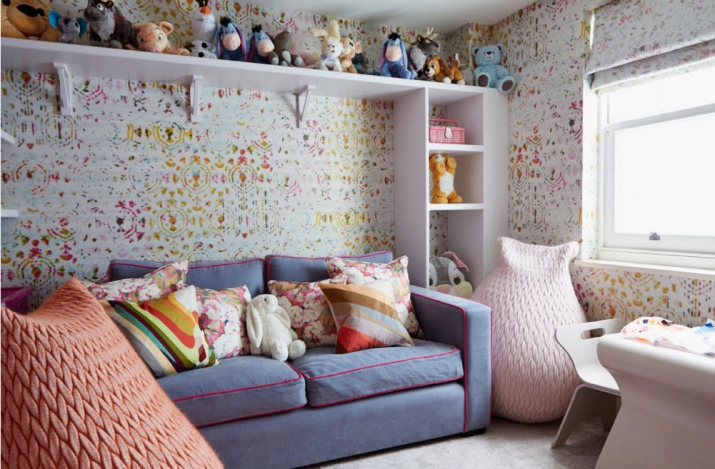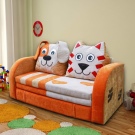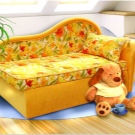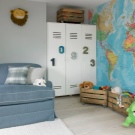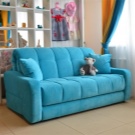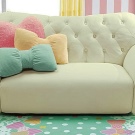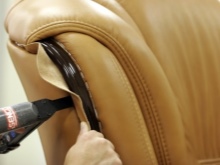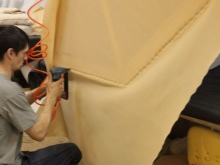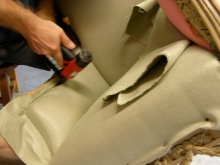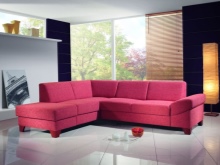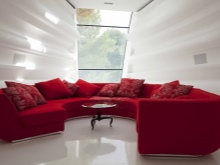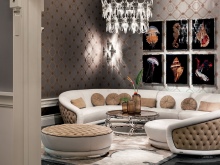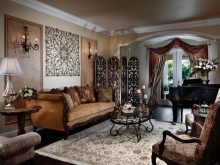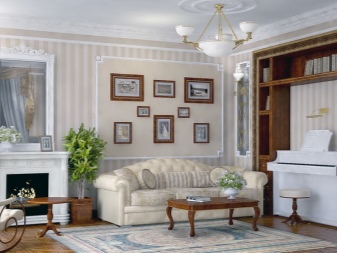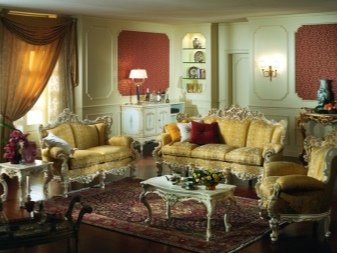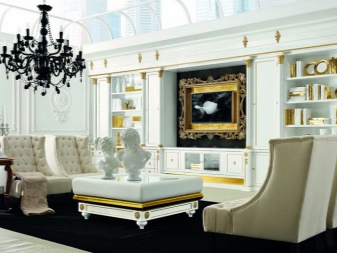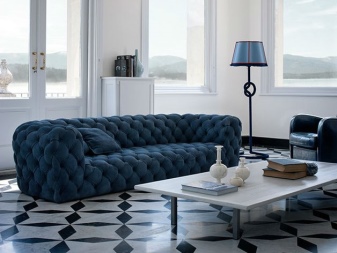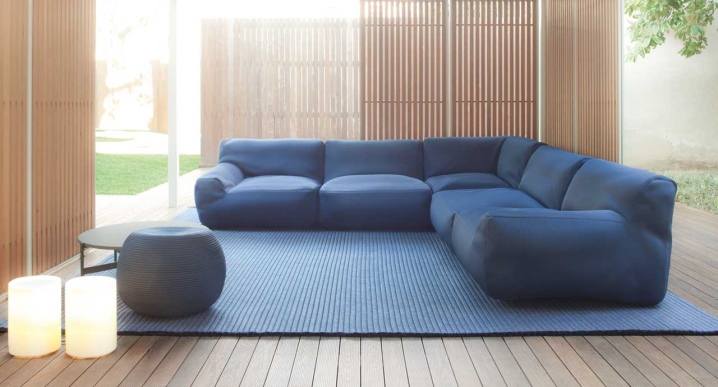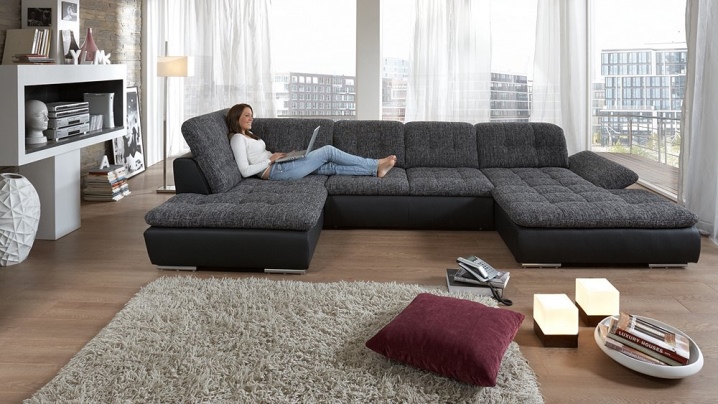Sofa upholstery
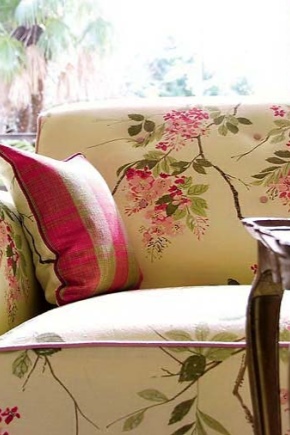
It is impossible to imagine any room without a comfortable and cozy upholstered furniture. In the office, its presence contributes to successful business negotiations. At home, comfortable sofas and armchairs help you relax after a hard day’s work. Choosing upholstered furniture, it is necessary to pay attention not only to the size, design, but also to the material used for upholstering the model.
General quality indicators
All types of fabrics used as upholstery of upholstered furniture, except for an attractive appearance and compliance with a certain interior, must also meet certain quality indicators. The main characteristics that determine quality include several factors that need to be oriented:
- The composition of the fibers. Any upholstery material incorporates these or other fibers - natural, synthetic or artificial. It is possible and their combination in different percentages.
- Wear resistance. Resistance of fabric to abrasion, stretching, friction, ability to recover after compression.
- Fire resistance The ability of upholstery material to resist ignition.
- The color stability of the upholstery material is characterized by its ability to retain color when exposed to various factors, such as UV light, humidity, mechanical friction. This factor depends on the dyes used to impart color to the material.
- Crushability The ability of the fabric during the mechanical action to form folds, as well as the possibility of their recovery.
- Under the strength understand the ability of upholstery to resist ruptures. This factor more than others, affects the quality of upholstery material. The strength of the material is in direct relationship with the fibers, more precisely, with their density and composition.
- Air permeability. The ability of upholstery material to pass air. It depends on the method of interlacing the fibers, by means of which through pores are formed, contributing to the transmission of air.
- The presence of additional coatings or impregnation. To give the upholstery material of certain properties, the fabric is treated with a certain composition. Teflon-coated fabric has not only water-repellent properties, but also dirt-repellent. Teflon impregnation is applied either by spraying or by dipping the material into the composition. During such processing, the fibers of the upholstery material are covered with a protective sheath, while the material does not lose its original properties, but becomes more practical in everyday life.
- To give the upholstery material a special strength, to prevent excessive stretching and shrinkage, an additional base is made.
- The ability to clean the upholstery is not only a dry method, but also a wet method, as well as using foam. Washable fabric has the ability to quickly be cleaned of various contaminants using one of three cleaning methods.
- Pilling ability - the ability of the fabric to form the pellets.Uphiliness of upholstery material is an indicator of quality fabric.
With the help of various indicators of upholstery material is determined by the category of fabric.
Types, pros and cons of furniture upholstery fabric
Modern upholstery materials are very diverse. In addition to the main indicators of quality, there are other factors that can be attributed to a particular type of material.
Flock
This type of finishing fabric is obtained by combining the fibers of polyester, cotton and nylon. A woven base or canvas is impregnated with glue, and then placed in an electrostatic field for applying small villi. Upholstery flock has a number of undoubted advantages, allowing it to occupy a leading position in the production of upholstered furniture. In addition to the attractive appearance, this anti-vandal fabric has a special strength and durability. It is resistant to sunlight, moisture and does not require special care, while maintaining an excellent appearance for quite a long time.
But there is also a small minus for this upholstery material - it strongly absorbs extraneous odors.
Chenille
It is characterized by a special thread structure.Outwardly, the thread resembles a caterpillar, the tufts of hair are woven between two particularly durable threads, which in turn are twisted. With the help of this structural thread, various patterns are created, giving the fabric a velvety bulk and some openwork. The composition of chenille can be different and depends on the type of raw materials used. Cotton, viscose, polyester and acrylic are used most often. As a rule, these types of fibers are mixed in various percentages. Upholstery material is particularly durable. Dense and wear-resistant fabric at a reasonable price is easy to dry clean.
The disadvantages include low resistance of the chenille to moisture and sensitivity to the claws of animals.
Velveteen
It has a fabric texture similar to velor. The velvety surface is formed by a different arrangement of fluffy fibers. Fibers can be completely natural and consist of cotton, and can be completely synthetic. There are samples with the addition of viscose. Strong and durable fabric has a low thermal conductivity, which is especially comfortable for the skin. The fabric is resistant to dirt and zamyatin.Elastic and relatively durable material is easy to clean with a simple soap solution.
But there are also disadvantages. Upholstery fabric does not tolerate coarse mechanical effects, undergoing which greatly deteriorates the appearance of furniture. In addition, the fabric is sensitive to UV light, it burns out. Too active cleaning damages the fabric structure.
Microfiber
Visually resembling a flock and consisting of polyester fibers, it is known for its durability and practicality. The dense arrangement of the villi gives this upholstery material the ability to repel liquid and various contaminants, preventing them from penetrating inside. This feature makes microfiber a very popular and sought-after fabric used as upholstery. In addition, this material has the effect of anti-alcohol, which is an undoubted advantage, especially for pet owners. Hypoallergenic fabric with high resistance to abrasion.
The high cost of the fabric is the main disadvantage. In addition, it requires specific care with the use of special tools.
Tapestry
Basically it has a large percentage of cotton.Durable and durable material is very resistant to moisture. There are downsides to this material. Increased abrasion is in direct proportion to the number of cotton threads. The higher the percentage of cotton, the faster the upholstery falls. Also tapestry fade in the sun.
Jacquard
It is based on a smooth, lint-free structure. The original ornament, which is based on a large rapport, is created by complex weaving. Jacquard fabric, due to its strength and long service life, is often used as upholstery for upholstered furniture. This woven material does not fade in the sun and has a high wear resistance.
The disadvantages of fabric include slippery surface and the high cost of the material. In addition, this upholstery material does not tolerate wet cleaning, as a result of which the original color of the fabric can significantly fade or even change the shade.
Linen
Natural material of plant origin has a lot of advantages. The material, pleasant to the touch, which is perfectly absorbing moisture and passing air. Natural fibers are well perceived dyes, so that this fabric can be dyed in any color.The fabric, strong and resistant to attrition, does not fade and does not burn out on the sun, and at addition of small percent of synthetic fibers it is less subject to crushing.
For people who prefer eco-style in the interior of the apartment or house, the furniture will be the most suitable option with linen upholstery. It perfectly transfers mechanical influences, such as wet and dry cleaning, as well as ironing. The only disadvantage of this fabric is the high cost.
Sackcloth
The eco-material also includes sacking, which can consist of either cotton or linen threads. In appearance, the fabric resembles a mat with the same characteristic weaving. Its coarse fibrous structure is notable for its increased wear resistance, so upholstered furniture, covered with sacking, will last for quite a long time. Practical durable and wear-resistant fabric is quite easy to clean. Of the minuses of this upholstery fabric can be called the high cost and susceptibility to decay with excessive moisture.
Leather and its varieties
For the manufacture of high-quality upholstered furniture used genuine leather.This material has a presentable appearance. Furniture, covered with genuine leather, is not only durable in use, but is not afraid of prolonged stress. The high cost of this material is almost the only disadvantage.
An alternative to genuine leather is artificial. Leatherette - it is quite durable material looks very similar to natural leather, but, in fact, differs from it. The material, pleasant to the touch, resistant to loadings and pollution, does not absorb smells. It is easy to care for him. But there are also disadvantages to leatherette: it burns out under the influence of sunlight and is afraid of high temperatures.
Ecoskin is a type of artificial leather, but with improved qualities. In appearance it resembles natural skin. The surface of this material is perfectly breathable, not afraid of high temperatures and is very wear-resistant. In addition, the price of this material is much lower than natural leather.
Faux suede
Durable, wear-resistant and abrasion resistant modern material. It has a low pile and has a structure with many micropores, due to which it has such operational characteristics.After processing the material with Teflon impregnation, it becomes resistant to UV light and various contaminants.
What is a companion fabric?
Very often, a sofa, an armchair, a sofa or an ottoman are made not from one type of fabric, but from two or even three. The main upholstery material, as a rule, prevails, that is, occupies a large area of the product. Used for covering the seats and back. Companion fabric occupies a smaller area and, as a rule, is localized on the front panel of the sofa under the seat. She obtyagivayut armrests, if available, as well as it is used in pillows, located under the back or side.
Companion fabric should be combined in texture and color with the main option. As a rule, the main fabric has a bright pattern, and the companion has a neutral calm tone.
Texture, color and print
The structure of the material with a characteristic relief smooth or rough is called the texture, which is responsible for tactile sensations. The texture of the upholstery material is considered visible pattern or pattern. Each type of fabric has its own texture, which, as a rule, is homogeneous.In fuzzy tissues, it is formed due to the different inclination of the pile.
Depending on the technology used, a different surface is obtained:
- velvet texture - at the perpendicular arrangement of the pile;
- curly - when the pile has different heights and is applied at different angles to the base.
Drawing on a fleece fabric is applied using dry or wet printing. The second method is more preferable, because thanks to it the color of the fabric is durable, rich and durable. In addition, a method such as embossing is used to impart a fleecy fabric of a certain pattern. The roller is rolled through textiles and leaves grooves that form the pattern.
The texture of natural leather has a natural origin and depends on the type of animal. Artificial leather can be given any texture inherent in natural material. To this end, PVC coating is applied to the woven base. As a rule, artificial and natural leather are plain. The most popular colors are black, white, plum, brown, beige.
Fabrics that are based on a smooth, lint-free structure, such as jacquard, scotchgard, tapestry, flax, and cotton, are characterized by the presence of a texture formed by the interweaving of threads.The fabric can have a smooth surface with either a color pattern or without it. Also there is a textured surface, for which the pattern is formed, which is formed due to the combination of threads of different thickness.
For the tapestry, used as upholstery material, as a rule, abstract and floral prints are characteristic. Abstract composition can be represented by geometric figures of different sizes, arranged in a chaotic order. Floral themes are represented mainly by drawings with various roses, daisies, orchids and many other flowers. Drawing on the tapestry is applied by woven by interweaving yarns of various colors.
The pattern of jacquard fabric consists of an original ornament, which is based on a large rapport, created by complex weaving. This fabric is characterized by a rich range of colors.
Chenille is another representative of lint-free fabrics. The soft texture of the chenille can be in a variety of colors and patterns. The color spectrum is represented not only by such traditional colors as black, brown, white, green, but also by less common shades: terracotta, crimson, red, emerald. Prints of this type of fabric differ in a huge variety.Striped, floral and abstract themes are especially popular as upholstery.
A large variety of today textures, textures, colors and prints of upholstery fabrics allows everyone to choose upholstered furniture in accordance with their taste preferences and financial capabilities.
How to choose a material?
The service life of any type of upholstered furniture directly depends on the quality of the upholstery. Therefore, buying a sofa, armchairs, ottoman or sofa, you need to decide how you plan to use the furniture.
Installing upholstered furniture in the living room involves everyday use not only for recreation, but, sometimes, for eating, watching an interesting film or educational program. Therefore, in addition to the attractive appearance, upholstery should be resistant to various types of pollution and mechanical damage. This is especially important if there are pets who love a soft sofa no less than their owners.
When choosing a sofa or sofa for a nursery, you need to adhere to a few other criteria:
- Upholstery fabric on upholstered furniture intended for installation in the nursery, should be safe, hypoallergenic and resistant to various types of pollution.
- The safest fabrics are those that incorporate natural fibers. Hypoallergenic fabrics are considered, having in its composition synthetic fibers that do not attract dust. Resistance to contamination is achieved by using special coatings.
- More preferable for children's rooms is a combined version of furniture upholstery: natural fibers in upholstery should prevail over synthetic yarns, and for resistance to contamination the fabric is treated with a teflon coating.
- Cushions, located on upholstered furniture, perform not only a purely practical function, but also an aesthetic one. Fabric for pillows is chosen, taking into account the interior style, color and texture of upholstered furniture. In addition, it is necessary that the material intended for pillows is safe and well cleaned.
How to freshen upholstery at home?
Upholstered furniture is a favorite vacation spot for the whole family, so upholstery often gets dirty. To give it a presentable look, you can use several methods, depending on the pollution.
- Dust can be removed with a vacuum cleaner.In the presence of a special nozzle cleaning will take place much faster and more efficiently. To refresh the color of the upholstery fabric, you can put gauze soaked in this solution on a special nozzle: 2-3 tablespoons of salt are added to warm water. The exception for this method of cleaning is a fabric with velor or velvet upholstery.
- Another way to tidy upholstery is by knocking it out with a damp cloth moistened with solution: 2 spoons of salt and 1 tablespoon of vinegar are added per liter of warm water. A rag soaked in this liquid is placed on upholstered furniture and knocks out dust with the help of improvised means, periodically rinsing. As a rule, dirt settles on wet fabric.
- You can freshen upholstery with Vanish. To do this, in 9 parts of water, dissolve 1 part of the product and beat the resulting solution to a strong foam. Apply the last one to the upholstery and clean it, let the upholstery dry for some time, and then vacuum it.
All about cleaning the sofa at home, see the following video.
How to change your own old trim?
Over time, the appearance of any upholstered furniture becomes not very presentable and the material needs to be replaced.Outdated upholstery can be changed at home and with their own hands. Although the process is not fast and very time consuming, but sheathing your favorite sofa or sofa is quite possible for everyone.
First you need to prepare the necessary tools and, of course, a new upholstery. From the tools you will need wrenches, anti-stapler, large scissors.
In order for the result to meet expectations, you must follow the step-by-step recommendation.
- To begin with we assort a sofa. If the furniture design is very complex and is replete with many details, then they can be numbered to facilitate subsequent reassembly. In order that fasteners were not lost, they can be put in a box.
- Next, we begin to carefully remove the old upholstery, carefully unplugging all the seams. As a rule, upholstery is attached to furniture with staples, and in obsolete models with the help of small studs. Tearing off the old upholstery from staples or studs is highly undesirable because an error of even a few millimeters will lead to an undesirable result.
- After the old upholstery will be removed, you need to inspect all the mechanisms of the sofa. This will help to identify broken items, if any.If all the parts and mechanisms work, then you can simply lubricate all the joints with engine oil.
- After separation of the upholstery material from the structure, it must be stripped. This is done in order to accurately cut all the elements.
- Proceed to the pattern. To do this, we lay out a new upholstery on a flat surface and lay on it the steamed elements of the old upholstery, for reliability we attach them with pins. Then with a piece of soap we outline every detail, remove the fixing pins and cut out. Now we sheathe the details and we can proceed to stretching the finished upholstery on the furniture.
- To fix the upholstery material on the frame, you must use a stapler. In order for the material to sit down smoothly, at this stage it is better to attract an assistant: one will tension and the other will attach the material. When all the elements will be attached, you will only enjoy the result.
We offer a video tutorial on this topic below.
Options in the interior
In order for upholstered furniture to look good in the interior of an apartment or house, you must follow some rules when choosing it:
- Upholstery fabric must be in harmony with the existing interior in color, texture and texture. Upholstery should be not only beautiful, but practical.
- The combination of upholstery color and interior style exists in several classic versions.
Upholstered furniture in dark blue or red colors will look great in a room designed in the style of constructivism and techno.
Upholstered furniture in black, white and gray colors will fit into the gothic and minimalist style.
Brown, white and golden colors of upholstery fabric will look good in a room decorated in Baroque, Renaissance and Empire style.
The red, black, yellow, beige and blue tint of the upholstery fabric are wonderfully combined with the art decor style.
Bright shades of upholstery suitable for high-tech style. Upholstery with the image of flowers and patterns goes well with Baroque, modern and classic styles.
For a harmonious overall picture of the room, it is necessary that the print and color be repeated in other elements of the interior.
Reviews
For most buyers, today the most popular material chosen as upholstery is flock. The fabric has earned positive reviews due to its operational properties and reasonable price. The flock's anti-vandal properties are noted by many buyers who have pets.
The second most popular material is chenille. Its strength, durability and environmental properties are appreciated by many buyers.
Jacquard, velor and tapestry, respectively, are located at 3.4 and 5 places. These upholstery materials like a huge number of buyers for the durability and originality of colors.
This rating of fabrics takes into account the optimal price and performance characteristics of each type.
